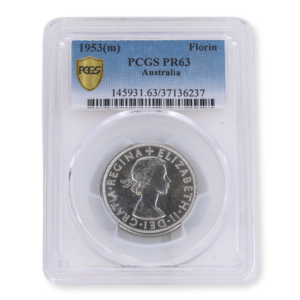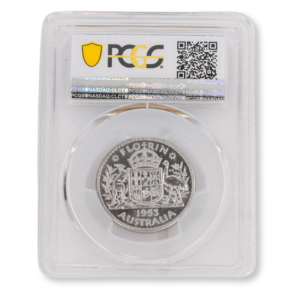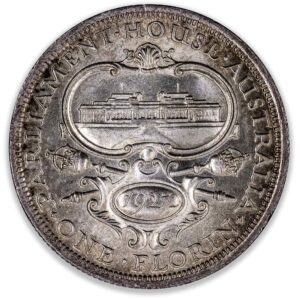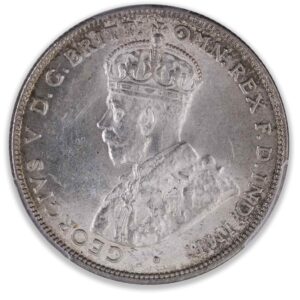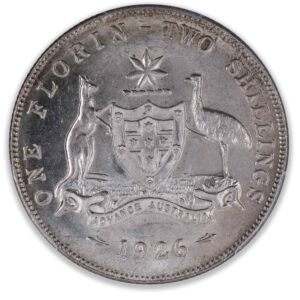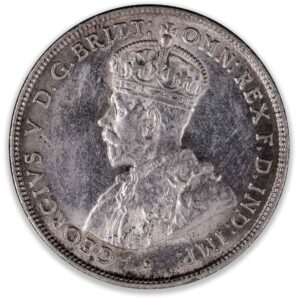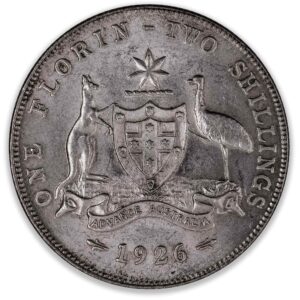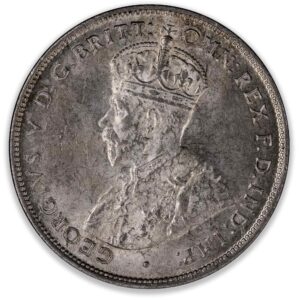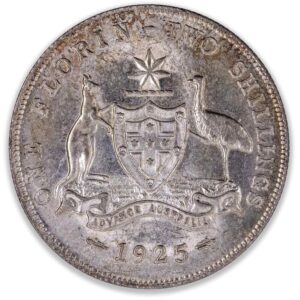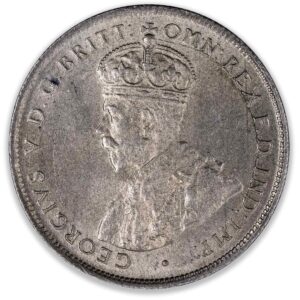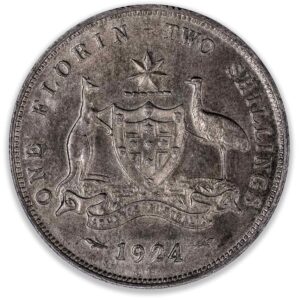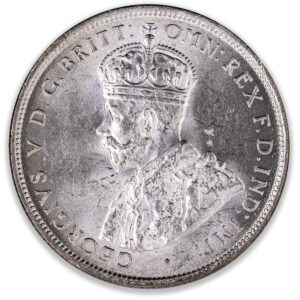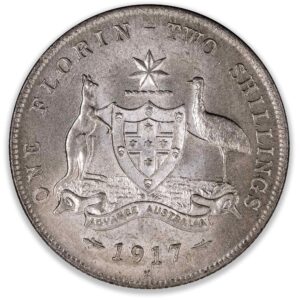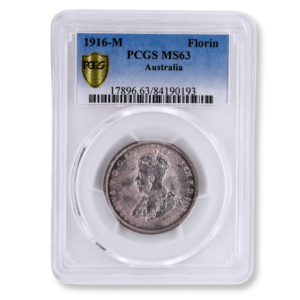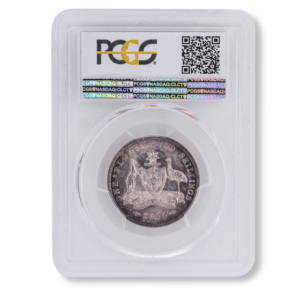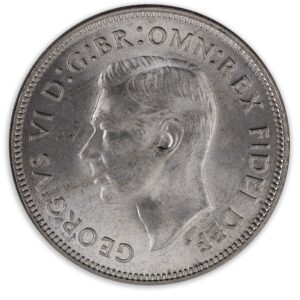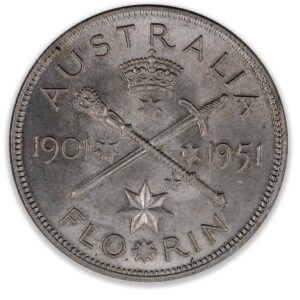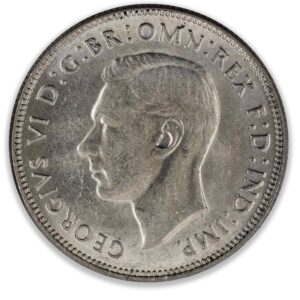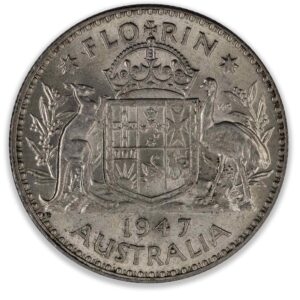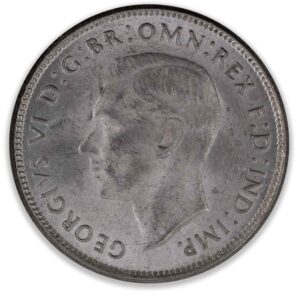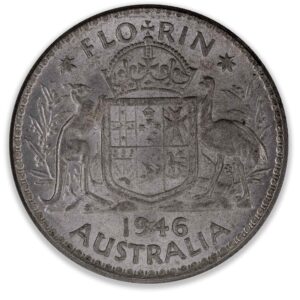The Australian florin coin, introduced in 1910, was a reflection of the nation’s evolving identity. As a coin used in the Commonwealth of Australia before the transition to decimalisation in 1966, the florin was valued at two shillings — equivalent to one-tenth of a pound. Its design and composition underwent changes over the years, but its beauty and significance remained constant.
Crafted with precision, florin coins bore the image of the reigning monarch on its obverse. The reverse, however, showcased the coat of arms of Australia, with variations including the kangaroo, emu and the shield containing the coat of arms. Some designs even featured the golden wattle plant as a background, symbolising Australia’s rich flora. With its intricate designs and historical imprints, the florin coin serves as a testament to Australia’s rich numismatic history.
While the florin coin is no longer in circulation, having been replaced by the 20-cent coin in 1966, it remains a cherished artefact for collectors. Its blend of artistry and history makes the florin Australian coin a sought-after piece for those passionate about the country’s past. To modern collectors, the value of the florin coin in Australia has grown considerably, reflecting its rarity and significance. At Jaggards, we offer a range of these coins, each priced based on its condition, rarity and historical importance. For a detailed look at the current prices of the Australian florin coins, we invite you to explore our selection below.
At Jaggards, we’re not just curators — we’re passionate about every florin coin that graces our collection. Each coin tells a story, echoing Australia’s rich past and the meticulous craftsmanship of yesteryears. Browse our selection now and immerse yourself in a tangible and timeless legacy.
If the Australian florin intrigues you, or if you’re looking to expand your collection, our FAQ page offers insights into our offerings. And for those who seek a personal touch, contact us, and our dedicated team at Jaggards is always on hand to guide and assist.
FAQs
The term “florin” originated from Florence, Italy. It was first introduced in 1252 as the “fiorino d’oro,” which meant “golden florin.” The coin was a gold piece minted by the Republic of Florence, and it bore the design of a lily on one side. Due to its consistent quality and wide acceptance, it became a standard coinage throughout the continent. Many countries adopted the term “florin” for their own coins, signifying a denomination or a specific value.
In the pre-decimal Australian currency system, denominations were structured according to the British £sd (pounds, shillings, and pence) system with the following relationships:
Above the Florin:
- Crown = 5 shillings (two and a half Florins)
- Pound (£1) = 20 shillings (ten Florins)
Equal to the Florin:
- Two Shillings = 1 Florin
Below the Florin:
- Shilling = 12 pence (half a Florin)
- Sixpence = 6 pence (quarter of a Florin)
- Threepence = 3 pence (one-eighth of a Florin)
- Penny = 1 pence (one-twenty-fourth of a Florin)
- Halfpenny = 1/2 pence (one-forty-eighth of a Florin)
During Australia’s transition to decimal currency on February 14, 1966, the Florin was officially equated to 20 cents in the new system, maintaining its one-tenth relationship to the primary unit of currency (with $2 replacing the pound). This conversion rate reflects the Florin’s central role in Australia’s monetary system throughout the pre-decimal era.
Florins minted from 1910 to 1945 were produced with a 0.925 sterling silver content, weighing 11.31 grams. However, florin coins minted from 1946 to 1963 were made with a 0.500 silver content (50% silver), combined with other metals like copper, nickel and zinc.
The best way to find out the value of your Australian florin is to have it appraised by a professional coin dealer such as Jaggards. You can do so by submitting details via our form with an accompanying image of your coin/s.
The Australian Florin’s production was distributed across five distinctive mints, each adding unique characteristics to these sterling silver coins. The Royal Mint in London and Birmingham produced early issues (from 1910), establishing the foundational designs. As Australia developed domestic capabilities, production shifted to the Melbourne Mint (identifiable by an “M” mint mark on some issues) and Sydney Mint (without specific mint marks but identifiable through die characteristics). During World War II (1942-1944), the San Francisco branch of the United States Mint supplemented production with distinctive “S” mint mark Florins that now command significant collector premiums. This multi-mint production history creates valuable investment differentiation, as coins from certain mints during specific years offer substantially greater rarity and corresponding premium values.
